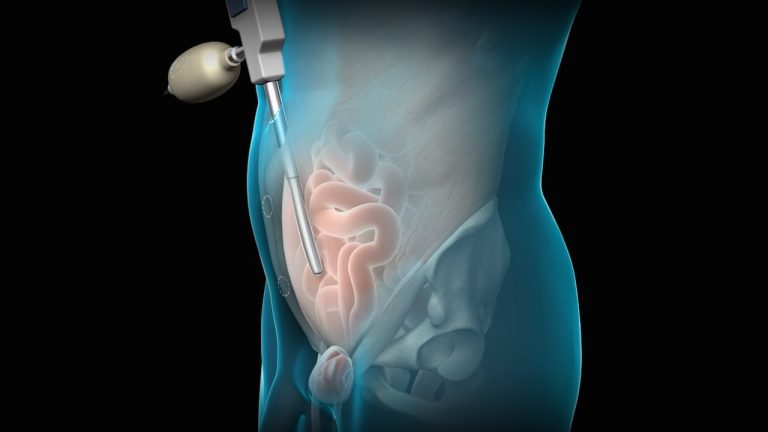
Table of Contents
Choosing Between Mesh and Non-Mesh Inguinal Hernia Repair: What’s Best for You?
If you’re facing inguinal hernia surgery, you may be wondering whether to opt for mesh repair or a traditional non-mesh procedure. Both methods have their benefits, but the best choice depends on your individual health needs and the surgeon’s recommendation. In this post, we will explore the differences between mesh and non-mesh inguinal hernia surgery in Los Angeles, and help you understand what might be the best option for your specific situation.
What is an Inguinal Hernia?
An inguinal hernia occurs when tissue or part of an organ, typically the intestine, protrudes through a weak spot in the abdominal wall or the groin area. This leads to a bulge that can be painful, especially when lifting heavy objects or standing for long periods. Inguinal hernias are common, particularly in men, and require surgical repair if they cause symptoms or grow larger over time.
What is Non-Mesh Inguinal Hernia Repair?
In the past, inguinal hernia repairs were performed using a traditional method known as “tension-free” repair, which involved sewing the edges of the hernia opening together. This approach did not use any mesh to reinforce the area, relying solely on sutures to close the defect. While this method can be effective, it has a higher risk of the hernia recurring after surgery.
Over time, surgeons discovered that using mesh significantly improved the strength of the repair and reduced recurrence rates. Despite this, some patients and surgeons still choose non-mesh repairs, particularly in certain situations.
What is Mesh Inguinal Hernia Repair?
Mesh in inguinal hernia repair involves using a synthetic material to reinforce the abdominal wall after the hernia is reduced. The mesh is placed over the defect and secured, allowing the body’s natural tissue to grow into it and strengthen the area. Mesh is preferred in most modern inguinal hernia surgeries because it offers better long-term results and lowers the likelihood of recurrence.
There are two main types of mesh:
- Synthetic Mesh: The most commonly used material in hernia repairs, it’s made from polypropylene or polyester and is designed to be durable and strong.
- Biologic Mesh: Made from natural materials, biologic mesh is typically used when there is an increased risk of infection or other complications. It’s often used in more complex or high-risk cases.
Comparing Mesh and Non-Mesh Inguinal Hernia Repair
Both mesh and non-mesh inguinal hernia repairs have their pros and cons. Here’s a breakdown of each:
- Recurrence Rate: Mesh hernia repair has a much lower recurrence rate compared to non-mesh repair. This is because mesh provides added strength to the abdominal wall, reducing the risk of the hernia reappearing.
- Recovery Time: The recovery time for both methods varies depending on the surgical technique used, but mesh hernia repair often leads to a faster recovery. Minimally invasive techniques, like laparoscopic surgery, are commonly used with mesh, leading to smaller incisions, less pain, and quicker recovery times.
- Risk of Complications: Mesh repair, while generally safe, does carry a small risk of complications, such as infection, mesh migration, or chronic pain. However, these risks are much lower than those of non-mesh repairs, which can lead to more severe complications such as hernia recurrence or tension-related discomfort.
- Long-Term Success: Mesh hernia repair is considered the most successful option for long-term relief. The added support provided by the mesh allows for a more durable repair, which is especially important for patients with larger hernias or those at a higher risk of recurrence.
Why Choose Mesh Hernia Repair Los Angeles?
Choosing Mesh Hernia Repair Los Angeles means opting for advanced surgical techniques and the expertise of experienced surgeons who specialize in hernia repairs. Los Angeles is home to a number of world-class medical centers that offer the latest in laparoscopic and robotic-assisted hernia surgery, ensuring a less invasive approach, reduced recovery times, and optimal results.
Surgeons in Los Angeles take the time to discuss each patient’s unique situation and tailor the procedure to fit their needs. Whether you choose mesh or non-mesh repair, a skilled surgeon will help guide you through the process and provide the best treatment options available.
How to Decide Between Mesh and Non-Mesh Repair
The decision to choose mesh hernia repair or non-mesh repair should be made in consultation with a qualified surgeon who can evaluate your individual needs. Here are a few factors to consider when making your decision:
- Hernia Size: Larger hernias or those with a history of recurrence may benefit more from mesh, as it provides extra reinforcement to the area.
- Health Conditions: Certain health conditions, such as a higher risk of infection or allergies to synthetic materials, may make non-mesh repair a better option for some patients.
- Personal Preferences: Some patients may prefer to avoid mesh due to concerns about the material, while others may prioritize the long-term benefits of a stronger, more reliable repair.
Conclusion
When it comes to inguinal hernia surgery, there are several options available, each with its own set of advantages and drawbacks. Mesh hernia repair is generally the preferred choice for most patients due to its long-term effectiveness and lower recurrence rates. However, non-mesh repairs may still be appropriate in certain cases, particularly for smaller hernias or patients with specific health conditions.
If you’re considering inguinal hernia surgery, be sure to consult with a skilled surgeon who can help you weigh the pros and cons of both approaches and make an informed decision. Whether you choose Mesh Hernia Repair Los Angeles or a non-mesh procedure, the goal is to achieve a durable, effective repair that supports your long-term health and well-being.






